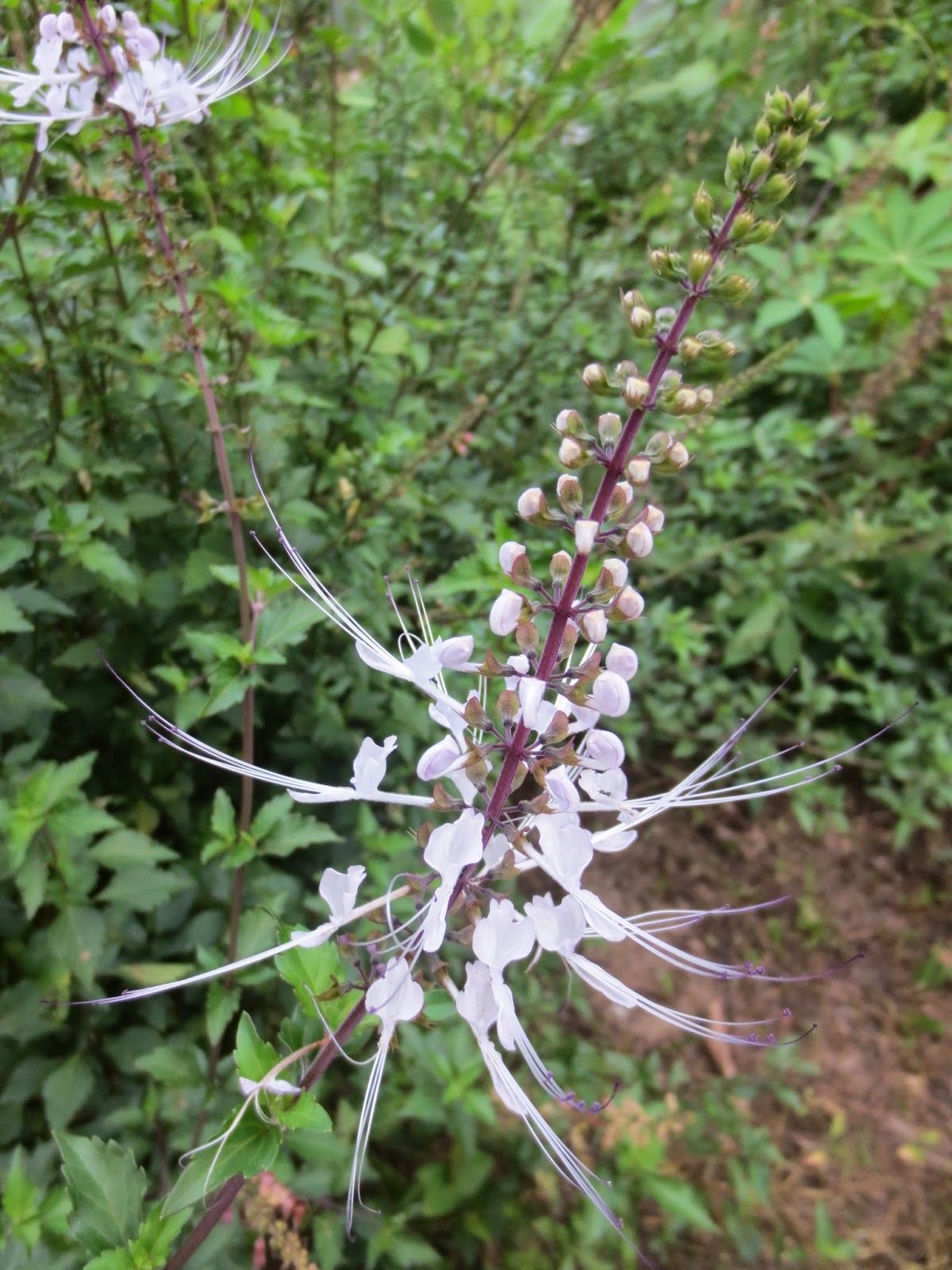Over the last several years, I have regularly consumed teas which we produce at the farm. Whilst I have the fresh produce readily available to make infusions, I needed a mechanism so that I can have it easily stored and readily available hence the move to produce teas. We have several plants and herbs that traditionally have been consumed as tea. Topping my list is the Misai Kucing tea or infusion. In alternative therapy, this tea has been used for diabetes, high blood pressure, gout, kidney, rheumatoid athritis and blood cleansing to name a few.
 I love food, and have a sweet tooth so this means that I enjoy having rich desserts, Malaysian traditional kuih, and a good steak. As a preventive measure, I will have a mug of warm Misai Kucing tea as an after meal drink to help regulate my blood sugar and cleanse my system. On days, when I have had a hard day working out at the farm, I will cool off with a nice, cold glass of this tea to help my body get rid of all the acids produced. In short, I drink this tea as a normal course of my diet and not view it as a “medicine” which almost always brings a negative connotation to mind.
I love food, and have a sweet tooth so this means that I enjoy having rich desserts, Malaysian traditional kuih, and a good steak. As a preventive measure, I will have a mug of warm Misai Kucing tea as an after meal drink to help regulate my blood sugar and cleanse my system. On days, when I have had a hard day working out at the farm, I will cool off with a nice, cold glass of this tea to help my body get rid of all the acids produced. In short, I drink this tea as a normal course of my diet and not view it as a “medicine” which almost always brings a negative connotation to mind.
Being part of my normal drinks selection list, I will drink it at least 3 times a week for maintenance and have additional drinks depending on how rich my meal was. Being fortunate to be able to produce my own tea, I only use the leaves and the flowers with its soft stalks. All this enables me to produce a flowery tasting tea without the bitterness and I do not mix it with “fillers” but prefer to have the all-natural taste.
There are basically 2 ways to prepare the tea:
- Steeping 1 flat teaspoon of tea mixture in just-boiled water for about 5 minutes. After straining the tea, more hot water can be added as long as the leaves can still produce the golden-brown tea.
- After bringing the water to a boil, add the tea mixture and reduce the heat to allow a gentle simmer for about 5 minutes. Turn off the heat and allow it to cool to chosen drinking temperature. I use this method to prepare a concentrate by simmering 10gm of the mixture in 1 litre of water. I will leave it to cool, strain it and store it in the refrigerator. This way, when I would like to have some, I will pour some of the concentrate into a mug and add hot water if I want a hot tea or add cold water with or without ice if I want to have it cold.
 I most often prepare a concentrate as this enables me to have it handy whenever I want some. I normally store the concentrate for no more than 1 week.
I most often prepare a concentrate as this enables me to have it handy whenever I want some. I normally store the concentrate for no more than 1 week.
I also bought a teapot with the strainer in it so that I can prepare the fresh, hot tea without hassle and then just keep adding hot water to it. I will store it overnight in the fridge and add more very hot water into the teapot the next morning. I call my Misai Kucing tea as my “Rebalancing Tea”.
I have also produce a “flavored” Misai Kucing tea by combining the Misai Kucing with Kemangi (Lemon Basil). This produces a tea with a hint of citrus. In traditional therapy, the Kemangi has minerals and elements that are beneficial for the heart as well as rich in nutrients so by adding this to the tea mixture, it boosts
 the therapeutic value of the tea. I also find that Kemangi helps to alleviate bloating as well as water retention. The method I use for preparing the tea is the same as for the Misai Kucing tea. It can also be consumed either hot or cold. For me, this tea is my “Inner Cleansing Tea”.
the therapeutic value of the tea. I also find that Kemangi helps to alleviate bloating as well as water retention. The method I use for preparing the tea is the same as for the Misai Kucing tea. It can also be consumed either hot or cold. For me, this tea is my “Inner Cleansing Tea”.
We also produce pure Kemangi which is also prepare and consumed similar to the other tea mixture. With its purported heart therapeutic value, I call this my “Heart Love Tea”. With its anti-inflammatory properties, I drink this tea when I have over-worked my muscles and joints. This is my alternative preventive and natural healing for my muscles and joints.
The key principle for these teas is to produce teas that can be incorporated into my daily diet and be treated as normal drinks. My aim for my health measures is to prevent or to reduce the impact of my eating and life style on my overall health without feeling forced. I hope others will be inspired to review their approach and will have a new normal. 🙂

























